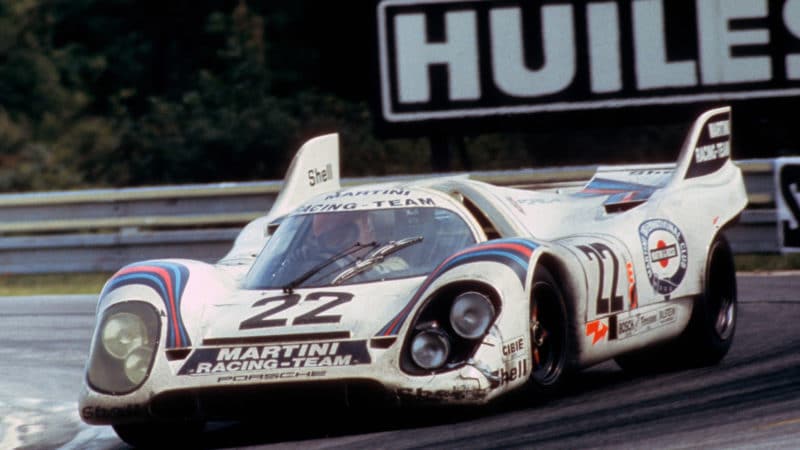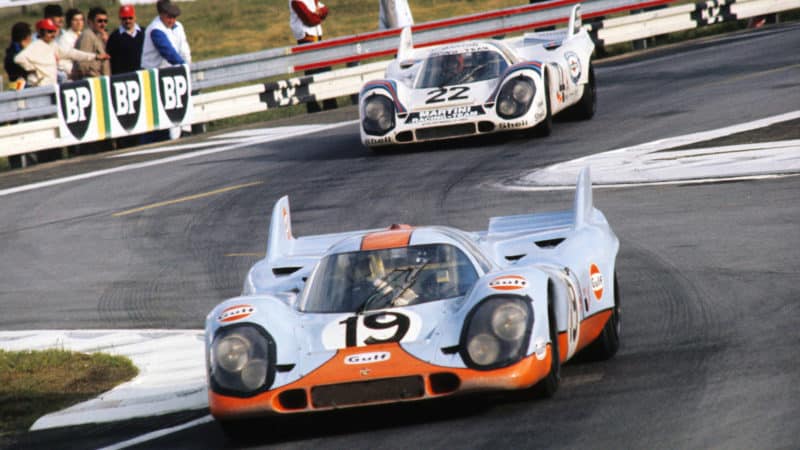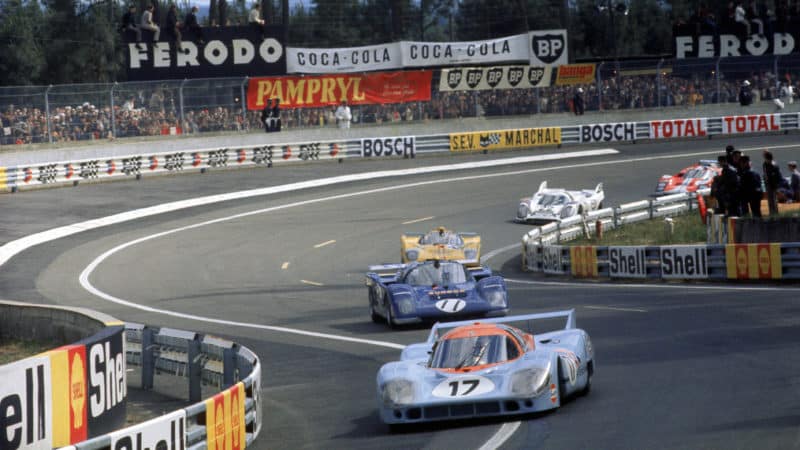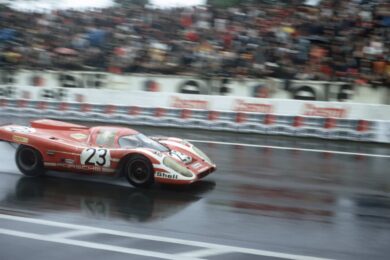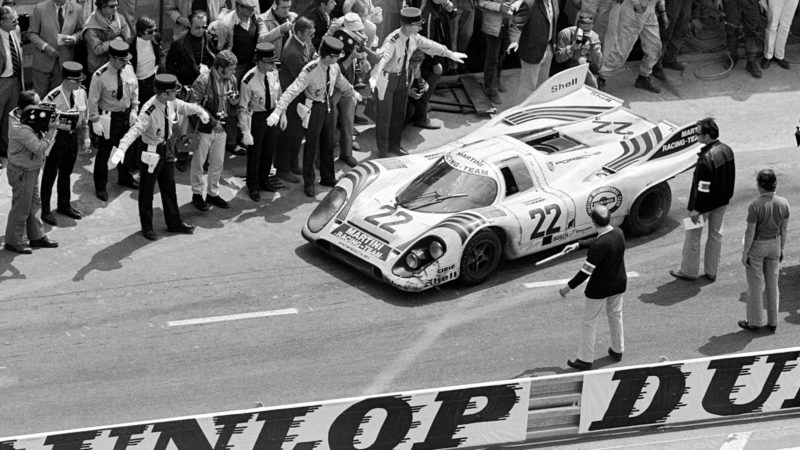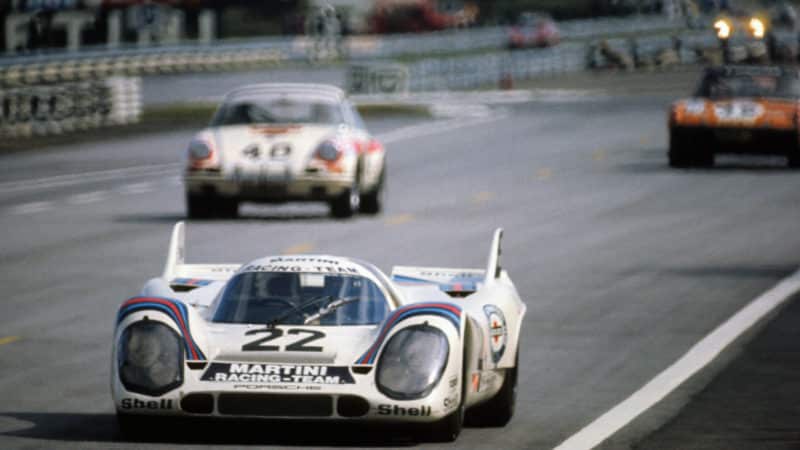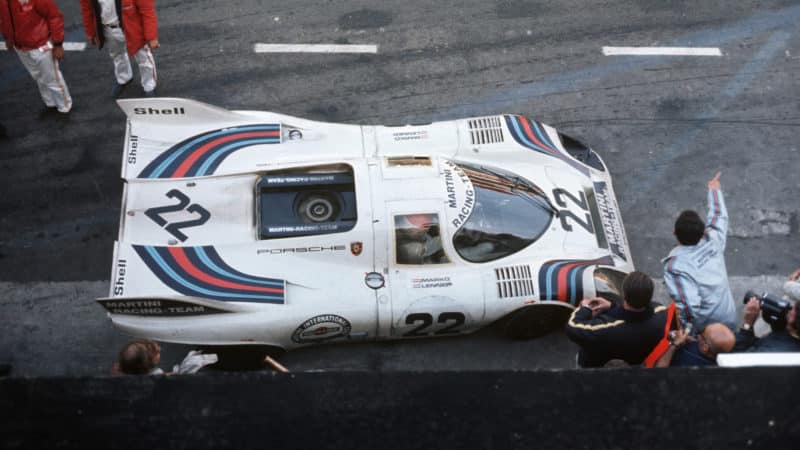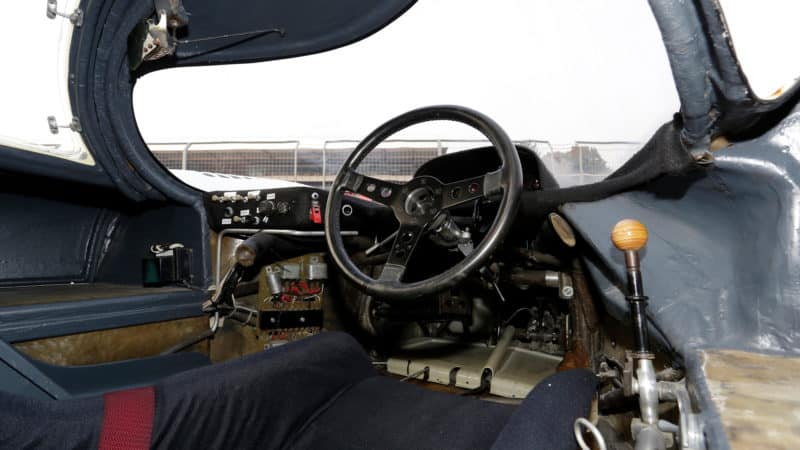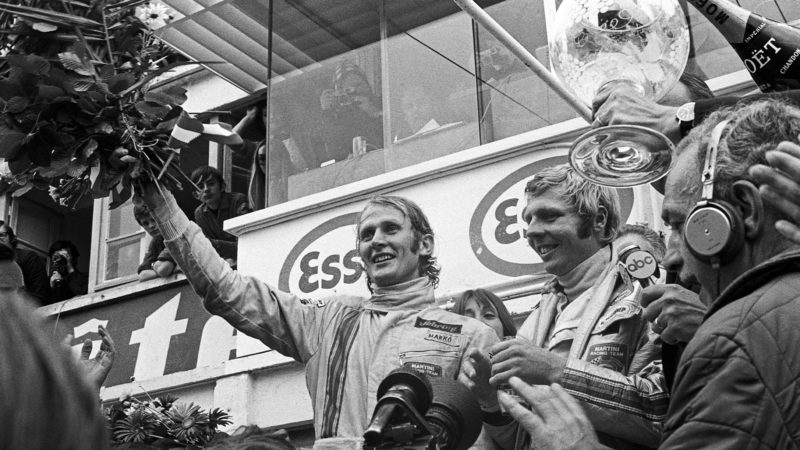This chastening experience coloured his choices for the 1970 race: “I asked for a 4.5-litre short-tail and for Hans Herrmann to be my co-driver; the oldest, he didn’t want to die. But I’d read it wrong. We qualified way back and I told my wife that there was no way we were going to win.
“Yet there were so many driver errors that we were leading after 10 hours. Keeping it on the island for the next 14 was incredibly stressful. Huge downpours. Down to 60mph in places. Yet I don’t remember anyone overtaking us.
“They might have postponed it today. There wasn’t even a Pace Car back then.”
As a winning result, Attwood was content to find himself alongside Herbie Müller in the third Gulf 917 in 1971 – a short-tail entered by way of back-up and prepared at Wyer’s Slough base rather than in Stuttgart.
Sure enough, the team’s long-tails set the pace, with Oliver and co-driver Pedro Rodríguez – their car on pole at 3min 13.9sec and registering the race’s fastest lap – being generally ahead of the sister machine of Jo Siffert and Derek Bell.
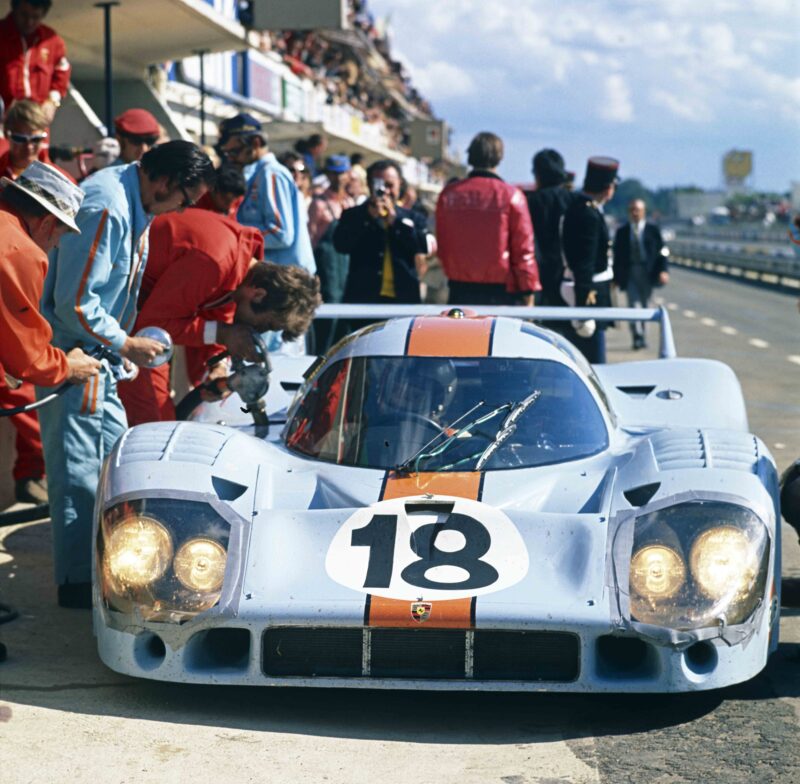
Oliver/Rodríguez 917 lost time in the pits before a burst hose ended its chances
Porsche
Both crews, however, would suffer the same long delay: a failed rear wheel bearing caused, so the team reckoned, by tyre shrouds that reduced drag at the cost of increased temperatures.
Rodríguez would be running second even so when a hose burst, covering him in hot oil and cooking the engine.
At approximately the same time the third Gulf car pitted jammed in fifth gear. The team’s request that a left-hand thread be used on the synchro cones had been ignored. Instead they had been Loctite-d and peened over. Fully 37 minutes were lost to the repair.
“The winning car had exactly the same problem about an hour-and-a-half later but, of course, they knew exactly what to do by then,” says Attwood. “Buckets of cold water helped repair their car in about 25min, let’s say. We lost the race by about five.”
